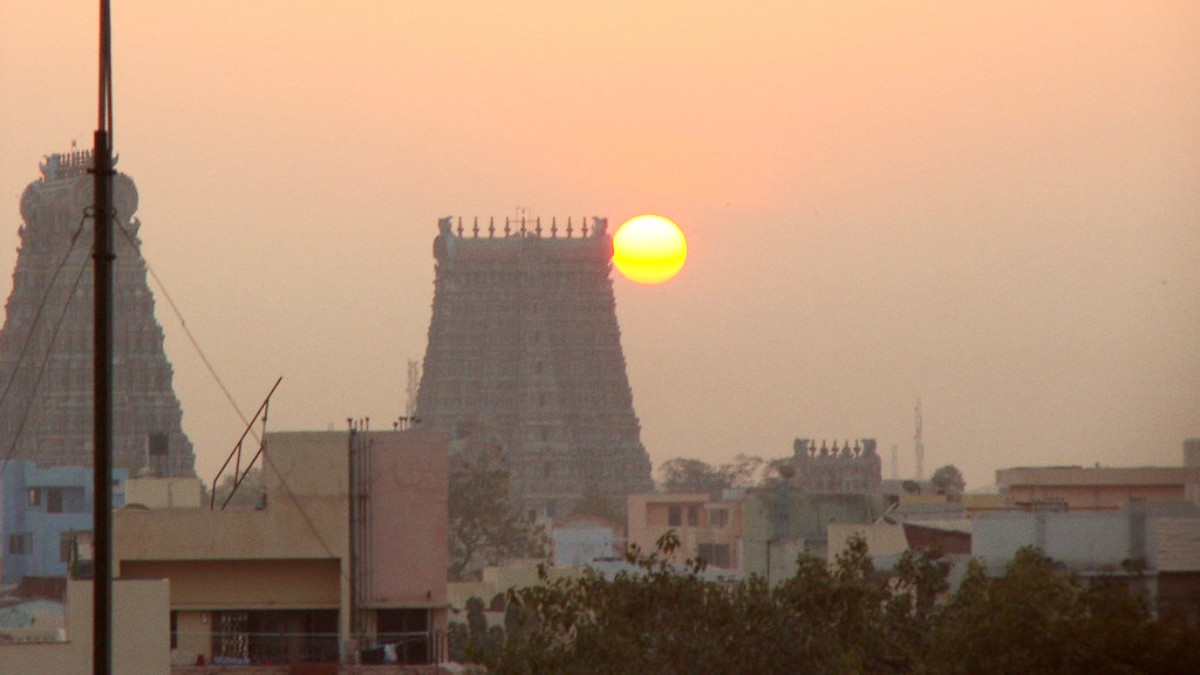
Tamil Nadu, India
Madurai's most famous sites draw visitors from across the globe.
The Meenakshi Amman Temple and Thirumalai Nayakkar Palace represent the city's historical and spiritual wonders.
The temple is vast and full of details. Do not rush your visit.
Housed in the historic Tamukkam Palace, this museum chronicles Mahatma Gandhi's life and work. It features artifacts, including a portion of his blood-stained dhoti. It focuses on the Indian freedom struggle.
A large dam across the Vaigai River, mainly for irrigation. It features a well-maintained garden called "Little Brindavan". Scenic views of the reservoir appear here. Located approximately 70 km from Madurai.
Beyond the main temple and palace, Madurai contains other historical sites worth exploring.
A 17th-century pillared hall opposite the Meenakshi Temple. Now a bustling market for textiles, tailor shops, and handicrafts. A glimpse into local commerce.
A large temple tank with an island temple. Famous for the annual float festival (Teppotsavam), held in January or February.
An ancient Vishnu temple, one of the 108 Divya Desams. Known for its tiered structure, impressive sculptures, and beautiful architecture.
A significant mosque in Madurai. It serves as a center for the Muslim community. It features a large prayer hall and the tombs of the Madurai Maqbara.
These sites offer unique photographic opportunities capturing local life and historical depth. Be respectful of worshippers.
Most historical sites are centrally located and accessible by auto-rickshaw or walking, though narrow streets are common.
Observe devotees bringing offerings. It is a part of daily life and worship. Flowers and fruits are common.
Each site displays unique architectural styles and intricate carvings. Take time to appreciate the craftsmanship.
Many of these historical sites are close to each other, allowing for walkable tours and easy exploration.
This palace offers more than just architectural splendor. It features an engaging evening show.
Madurai's natural surroundings present peaceful escapes and glimpses of ancient history.
Explore the lifeline river and ancient Jain caves for a different perspective.
The lifeline of Madurai. Its water levels vary seasonally, often appearing dry during non-monsoon months. The river banks are used for various rituals and local activities.
A small hillock on the outskirts of Madurai. It features ancient Jain caves and stone beds, along with rock-cut sculptures and inscriptions dating back to the 1st century BCE. Panoramic views occur here.
Both locations present quiet areas away from city bustle. Ideal for reflection and history enthusiasts seeking a tranquil atmosphere.
A sensory experience, often missed by mainstream tourists. A huge array of banana types appear. Observe local trade.
Find market toursDedicated to the village guardian deity Ayyanar. Typically open-air temples with large, colorful terracotta horses and figures. A fascinating glimpse into local folk traditions.
Explore cultural visitsAn ongoing excavation site. Unearthed artifacts date back to the Sangam period (6th century BCE). Discoveries shed new light on ancient Tamil civilization. A small museum displays some finds.
Discover historical sitesThese locations expose a side of Madurai beyond the main tourist routes. They present opportunities for genuine local interaction.
Learn more locallyMany of these spots feature unique visuals, ideal for photography capturing local essence.
Capture MaduraiThese sites often require local transport and may have fewer amenities.
Allocate ample time for the Meenakshi Amman Temple. It remains vast and intricately detailed.
Do not hurry your exploration.
Strategic planning enhances your sightseeing in Madurai. Consider time, interest, and pace.
Visit major temples and sites during early morning or late afternoon to avoid heat and main crowds. This offers a more peaceful experience.
Group nearby attractions together (e.g., Meenakshi Temple, Puthu Mandapam) to maximize your exploration efficiency and reduce travel time.
Madurai offers many sights. Avoid over-scheduling your days. Factor in time for rest, local meals, and spontaneous discoveries.
The Masi Streets and other local markets display a side of Madurai. Explore them for unique insights and shopping.
Find local market toursMadurai's street food scene is legendary. Dedicate time to tasting local snacks and specialties from various vendors.
Join a food walkSeek out workshops or shops specializing in traditional Madurai crafts, like Sungudi saree making, for unique souvenirs.
Discover local artisansIf time permits, a trip to Samanar Hills offers a peaceful escape and historical significance outside the city bustle.
Explore nature excursionsEfficient transport helps you cover Madurai's widespread attractions.
Hydration is throughout your sightseeing.
Engaging with local life deepens your travel experience.
Madurai is a spiritual hub. Its temples are active places of worship, not just historical monuments.
Madurai's structures are marvels of Dravidian and Indo-Saracenic styles, embodying centuries of artistic tradition.
Each corner tells a story. Look closely.
Madurai hosts grand festivals that offer unique cultural spectacles.
Festivals immerse you in the heart of Madurai's traditions.
Madurai's food reflects its rich history and cultural diversity.
Food is an integral part of the cultural journey in Madurai.
Consider a local guide to deepen your understanding of the history and cultural refinements of each site. They provide context often missed by independent exploration.
Cultural experiences often unfold spontaneously. Maintain some flexibility in your itinerary to partake in unexpected events or local interactions.
Approach Madurai with an open mind. This enhances your appreciation for its unique traditions, spirituality, and way of life.